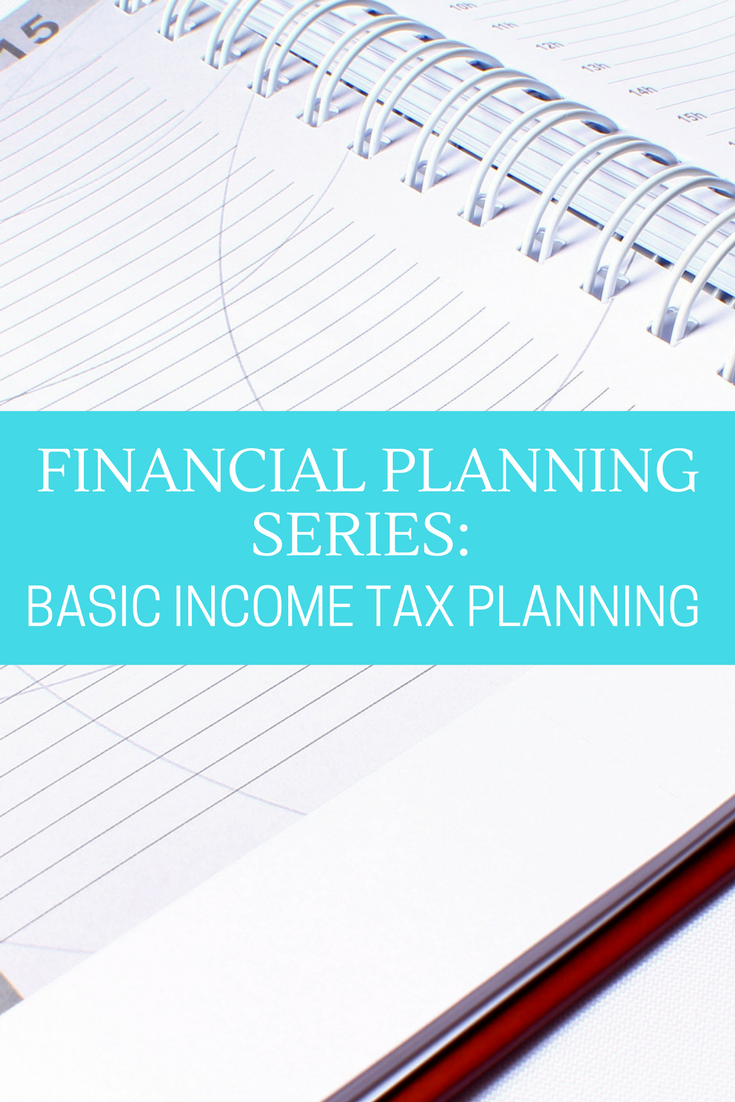New to financial planning? Start with the overview. Then understand cashflow, learn about insurance planning and risk management, or pump up your investment planning.
As your income and investments grow, so will your tax responsibility. After all, Uncle Sam wants a little bit of your good fortune too! There are a few tips and tricks to lowering your tax responsibility though and they can really help you out when it comes time to file. However, you don’t want to wait until April 14th to start looking for deductions. You’ll need to start sheltering some of your funds before the end of the year to qualify for them.

Here’s what you need to know when it comes to basic tax planning:
Plan Your Deductions
You have a choice between standard and itemized deductions when it comes to determining your taxable income. A standard deduction is pretty straightforward, it’s a dollar amount set by that government that you can claim without calculating any expenses that typically make up an allowed deduction. Itemized deductions on the other hand are just what they sound like, an itemized accounting of actual expenses allowed for deductions. If your expenses over the year are more than the standard deduction amount, you’ll want to go with itemized deductions. You’ll pay less tax and get a larger refund.
One thing to keep in mind though, itemized deductions require proof of expenses so you’ll need receipts and any other documentation showing these expenses or they won’t be allowed. If you believe that the itemized deductions will work in your favor, be sure to set up a good filing system for holding on to your receipts. Regardless of which deduction method you choose, it’s always a good idea to hold on to receipts so that you can make a better decision come tax time.
Retirement Savings
Retirement accounts are a great way to reduce your taxes as well as have income for the future. A qualified individual retirement plan can create a tax shelter of income that is not taxed. For instance, at a 25% income tax rate, depositing $15,000 into a qualified retirement plan can save you $3,750 on your tax return and you won’t pay taxes on your deposit until the money is withdrawn. If you wait until the required age for withdrawal, you’ll even avoid paying most of the taxes on these deposits. There is a maximum allowance for yearly deposits into these accounts though so be sure you know what the limit is for the fund you select.
Other Savings That Are Tax-Sheltered
There are a few other options for saving money and getting deductions that allow you to defer or even avoid paying taxes altogether.
Health Savings Accounts including medical savings accounts and flexible spending accounts can be funded by you or your employer, or both. Both contributions and withdrawals are tax-free.
529 College Plans are funded with after-tax deposits and qualifying withdrawals are also tax-free. The 529 Plan allows you to choose with a prepaid tuition plan or an education savings plan.
Dependent Care Savings are flexible spending plans focused on helping you pay for childcare while you are working. They are held in separate fund and qualifying deposits and withdrawals are tax-free.
Keep in mind though that any withdrawals made from these accounts that are not for a qualifying expense are taxable at the time of withdrawal.
Tax Credits
Be sure to look for tax credits that apply to your financial situation; they’ll help reduce your tax and can even give you a refund. A few to look for include:
Earned Income Tax Credit is for low-income earners. Your annual earnings, filing status, and number of dependents will determine if you qualify.
Child and Dependent Care Credit helps cover childcare and/or disabled dependent care when you are working.
American Opportunity Credit helps cover some of the costs associate with post-secondary education during the first 4 years of college. There is a maximum credit of $2500 per student and 40% of the credit is refundable.
Leave a Reply